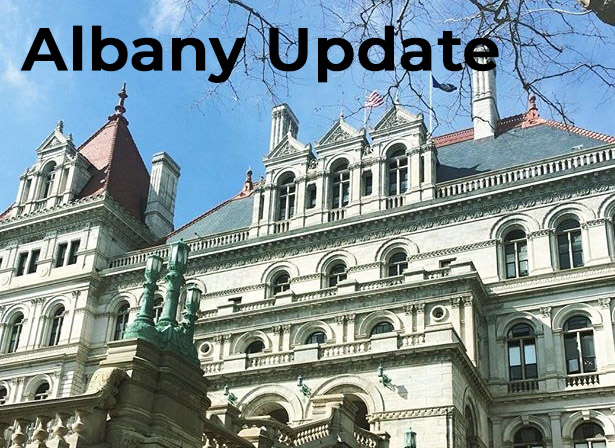
Legislature, Governor Fully Fund Environmental Programs in Budget. Much More is Expected in Final Weeks of the Legislative Session.
By Roger Downs, Conservation Director
Despite a projected $15 billion historic budget deficit brought on by the pandemic, the NYS Legislature and Governor Cuomo struck a deal for a balanced FY 2021-22 budget that leveraged federal bailout money and increased taxes on the wealthiest New Yorkers and corporations to close the fiscal gap. Instead of austerity spending, NY lawmakers provided relief for those hit hardest by the coronavirus pandemic, including renters, small businesses and undocumented immigrants.
This budget was good for the environment too, as funding levels remained at historic highs:
- The Environmental Protection Fund, NYS’s primary funding source for critical programs like open space acquisition, farmland and habitat protection, drinking water infrastructure and waste reduction, is fully funded at $300 million.
- NY State parks received $110 million in capital funding to maintain beaches, trails, playgrounds, and rest areas that were “over loved” by record crowds looking for refuge from quarantine life.
- $500 million was appropriated to continue repairs to the state’s failing sewage and drinking water infrastructure, upgrades to septic systems, remediation of contaminated drinking water, source water protection through land acquisition projects, confronting harmful algal blooms in our waterways, addressing water pollution caused by agricultural run-off, replacing lead drinking water service lines, and more.
- The legislature also voted to put a $3 billion bond act before the voters in fall 2022. Projects funded through the act will protect critical habitats, restore wetlands, prevent floods, safeguard our drinking water, and ultimately support public health. It will also provide thousands of New Yorkers with good climate resiliency jobs when the COVID-19 emergency finally passes.
While there is great relief (and gratitude) that NY’s critical environmental programs will maintain sustaining funding levels – there remains great anticipation for what the legislature will do to address the host of environmental problems still facing the state.
At the time of this writing, the Senate and Assembly have combined efforts to ban tiny shampoo bottles from hotel bathrooms, set zero emissions standards for cars and trucks (as long as California sets the same standards), ban the spreading of frack waste on our roads, and put before the voters a constitutional amendment that would give New Yorkers the right to a “clean and healthy environment” (even as the courts continue to stifle citizen enforcement of such rights)
What is anticipated from the two super majorities in the Senate and Assembly is great. Even as the State grapples with the complicated implementation of the 2019 Climate Leadership and Community Investment Act, there are many critical follow up actions that the legislature cannot ignore. Despite the climate law requiring a zero emissions electrical grid by 2040, NYS continues to permit new gas-fired power plants. Despite having a state mandate to reduce greenhouse gas emissions across all sectors, new cryptocurrency facilities are manufacturing virtual money behind the meters of dirty fossil fuel plants at great cost to the planet. Despite the promise of the $3 billion dollar bond Act to restore wetlands and support climate resiliency, the state is losing wetlands at an alarming rate due to regressive laws that limit their protection. And the list goes on: harmful pesticides that perpetuate pollinator extinction, a tidal wave of plastic that is drowning the state in own packaging waste, and pervasive environmental injustices that linger in communities where we have long ignored inequity and systemic racism.
There are only a few weeks left in the legislative session. We are counting on the legislature to make the most of it.
To track the progress of environmental bills in New York, visit the Sierra Club Atlantic Chapter’s legislative page.